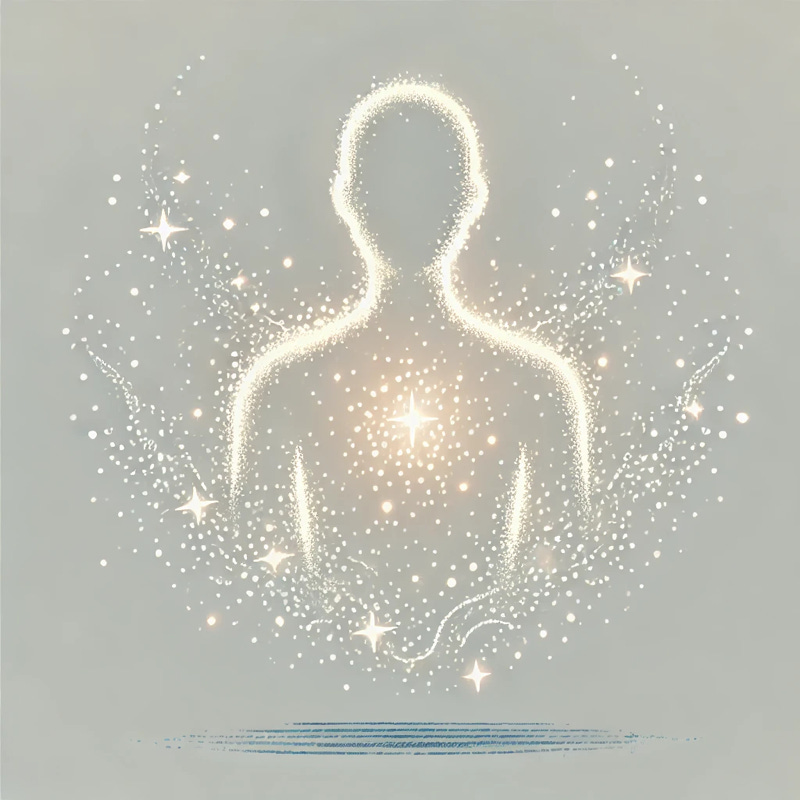Aura.
I've learned from my students that being 'minus aura' is bad, leading me to use the phrase 'minus aura points' when I have to remind them about appropriate behaviour/dress/handing in work. Usually met with a smile, or in the case of one student, utter disbelief that an adult would use the term, I can tell them that I am actually using the term as Walter Benjamin did in his 1935 essay, 'The Work of Art in the Age of Mechanical Reproduction'. Their casual use of 'aura' to denote presence, authenticity, and authority unknowingly echoes Benjamin's more theoretical concept. I read his essay recently to support the Oxbridge programme I am designing and was struck by how Benjamin's concept of 'aura', the unique presence of an artwork in time and space, speaks powerfully to the current challenges facing education in the age of AI.
Benjamin argued that the mechanical reproduction of art fundamentally altered not just our access to it, but our very relationship with it. He argues that 'The uniqueness of a work of art is inseparable from its being embedded in the fabric of tradition...The presence of the original is the prerequisite to the concept of authenticity'. By reproducing it via mechanical means where the original is nowhere to be seen, we dissolve the art's 'aura', removing its embeddedness from tradition and erasing its unique chronological and spatial distinctiveness. This democratisation transforms not just the availability of art but the very nature of artistic experience and the value we attach to it. It also loses its attachment to ritual, first magical, then religious. Once it does this, art begins to be 'based on another practice – politics.' As such, it creates a terrain of struggle, and Benjamin was keen to highlight how this newly democratised art could be used for genuine transformation or to maintain existing structures of power. This new form of mass reproduction allowed humans to be 'brought face to face with themselves', creating possibilities for both collective self-awareness and mass manipulation.
This analysis can be applied powerfully to education and AI. Just as photography didn't just make art more accessible but fundamentally changed how we see, AI doesn't just make education more available but potentially transforms how we learn and understand. The technology threatens to dissolve the 'aura' of education and learning, its uniqueness in space and time, whilst democratising access. We should not, however, lay the cause in the advent of generative AI. The contours of this transformation became visible during the pandemic, which stripped away the ritualistic aspects of education we had taken for granted. The ‘sacred’ spaces of school classroom, lecture hall, and seminar room, with their carefully choreographed gatherings of teachers and students, were suddenly transported for many, but not all, to the mundane settings of living rooms, dining tables and sitting on the sofa with the camera turned off whilst watching something else. This particular fixed point in time revealed how much of education's power relied on its ritual aspects, just as Benjamin's analysis exposed the ritual basis of art that was invisible before mechanical reproduction challenged it.
The collapse of the home and school is particularly apt when reviewing Benjamin's quotation of Paul Valéry who makes an analogy between art and utilities:
'Just as water, gas, and electricity are brought into our houses from far off to satisfy our needs in response to a minimal effort, so we shall be supplied with visual or auditory images, which will appear and disappear at a simple movement of the hand, hardly more than a sign.'
Our contemporary variant might read:
'Just as water, gas, and electricity are brought into our houses from far off to satisfy our needs in response to a minimal effort, so we shall be supplied with lessons, lectures, and learning materials, which will appear and disappear at a simple movement of the hand, hardly more than a query to AI.'
The visible separation of education from traditional rituals in the pandemic appears to be deepening with the mass availability of AI, dislocating access to knowledge, teaching and social support further from traditional temporal and spatial locations. Following Benjamin's analysis, this process of democratisation and freeing from ritual inevitably leads to contestation in the realm of politics. This helps explain the current landscape of responses: those mourning the loss of established ways, the evangelists who want to overlay AI on existing systems whilst leaving them essentially unchanged, and those who see potential for radical transformation of what education, schools, and teaching might become.
This struggle plays out in debates about academic authenticity, where tools like vivas attempt to maintain connection to the 'original', the embodied person rather than just accept a 'written' piece of work. But just as mechanical reproduction created entirely new forms of artistic experience, we have to accept that there will be new forms of learning and assessment that transcend traditional spatial and temporal constraints.
The possibility of a post-auratic education raises profound questions that echo Benjamin's concerns about art. Does learning require ritual elements to be effective? Can new digital rituals replace traditional ones? What might be lost or gained when education loses its ritual aspect? Most importantly, will AI-enabled education serve genuine democratic transformation or simply make existing educational hierarchies more efficient and palatable? Benjamin's insights suggest that these questions cannot be answered purely in pedagogical terms. They are political questions about power, access, and the purpose of education itself. This should grab the attention of every educator because rather than just being a technological problem, it is a political one that can be shaped by others if we let it.




